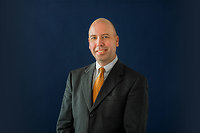For several years, it has been clear that a hospital could not be liable for medical malpractice unless one of its physicians was first found liable. The basis for this rule was that medicine is practiced by individuals and not corporate entities. As such, a hospital or other corporate entity would not be responsible for malpractice if its physicians had been dismissed, were never sued, or were otherwise not liable to a claimant. Since the development of this principle, hospitals have been arguing that this rule should also preclude claims against them if the hospitals’ nurses or technicians were not first found liable. Recently, however, several appellate courts have narrowly construed this principle and determined that a hospital could be vicariously liable for the negligence of its employees who performed medical services in the scope of their employment even if the employee is not a party to the lawsuit.
On March 16, 2012, the Sixth District Court of Appeals reversed the dismissal of a hospital from a lawsuit where the hospital had argued that it could not be liable for the negligence of its nursing staff because its nurses had not been named as defendants in the lawsuit and the statute of limitations had run as to the claims against the nurses. Tisdale v. The Toledo Hospital, 6th Dist. No. L-11-1005, 2012-Ohio-1110. In Tisdale, nurses at Toledo Hospital allegedly failed to follow a doctor’s instruction to place pressure cuffs on a patient’s legs following surgery to prevent blood clots from forming. A blood clot formed resulting in brain damage and blindness. In the subsequent lawsuit, the patient never named the nurses as defendants. The hospital sought dismissal arguing that it could only be vicariously liable if its employees were first found liable which could not happen since the claim against the nurses was time barred.
The appellate court rejected the hospital’s argument and reversed the trial court’s dismissal of the claim. The court reviewed the historical development of agency principles and principles of vicarious liability and concluded that a plaintiff has a claim against either an employee or employer or both for torts committed by the employee in the course of his employment. The court went on to note that there is no requirement that an employee be named as a party to the lawsuit in order to prove the employee’s negligent acts.
Similarly, in Cope v. Miami Valley Hosp., 195 Ohio App.3d 513, 2011-Ohio-4869 (2nd Dist.), the Second District Court of Appeals also rejected a hospital’s argument that it could not be liable for the negligence of one of its technicians who was not a party to the lawsuit. In Cope, a plaintiff underwent an MRI procedure under anesthesia at Miami Valley Hospital. After the procedure, plaintiff was diagnosed with third degree burns and sustained permanent scarring from the burns. Plaintiff sued Miami Valley Hospital along with a MRI technician employed by the hospital. After plaintiff voluntarily dismissed the technician, the hospital moved for summary judgment arguing that it could not be found vicariously liable for the technician’s negligence because only individuals could commit medical malpractice and the individual allegedly responsible for plaintiff’s injuries had been dismissed. The trial court granted the hospital’s motion for summary judgment and plaintiff appealed.
On appeal, the 2nd District determined that the Supreme Court’s authority finding that an entity could not be vicariously liable for professional malpractice unless one of its principals or associates was first found liable must be narrowly applied. The court drew a distinction between a malpractice claim and other medical claims. The court observed the well-established common law principle that malpractice is limited to the negligence of physicians and attorneys. It determined that no other medical employees are subject to a malpractice claim. Additionally, the court observed that hospitals employ a wide range of people who provide a variety of medical services to patients. It further held that a hospital is responsible for the negligence of its employees who perform medical services and act in the scope of their employment.
These recent decisions reflect a growing sentiment that courts are limiting application of the argument that a hospital is not responsible for medical negligence claims unless one of its physicians is first found liable. Hospitals may remain vicariously responsible for the negligence of non-physician employees who render medical services to the hospital’s patients regardless of whether these employees are parties to the lawsuit. Hospital administrators and insurers should be mindful of the limitations recognized by these decisions in evaluating claims asserted against medical providers.
For a copy of these cases or more information concerning their application or have any other issue with respect to healthcare liability, please contact one of Reminger’s Medical Malpractice / Healthcare practice group members.

